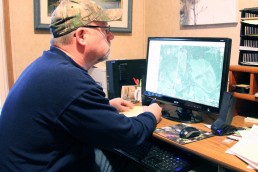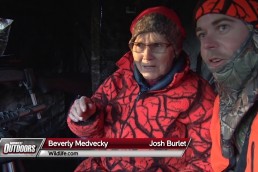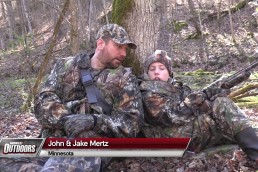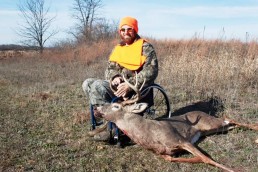Plan your Fall Whitetail Hunt Now
SHARE THIS POST
If you’re going to take a hunting road trip for whitetails in fall you need to start planning now.
The longest journey begins with a single step. If you’re planning to travel to hunt whitetails this year you need to take that first step right now. Tag application time is late winter through spring, so it’s also time to start doing your homework to increase the odds of coming home with a buck.
First, make sure you can secure a deer tag for your destination state. Many offer whitetail tags over the counter (OTC), but in some states you must apply to receive one. Several states have drawings that award tags based on the number of applicants and preference points. Each time you’re unsuccessful in the drawing you’re then awarded a preference point. For example, if you want to bowhunt in any of the good zones in Iowa you will need at least two preference points. If you apply for three years, you’ll then most likely draw the tag the third year. Most states offer the option of buying the point separately so you don’t have to send in the entire tag fee when there is no chance of drawing a tag. If you want to hunt in a state with a drawing in the future you should start right now, buying a preference point each year. You can hunt states with OTC tags until you get drawn.
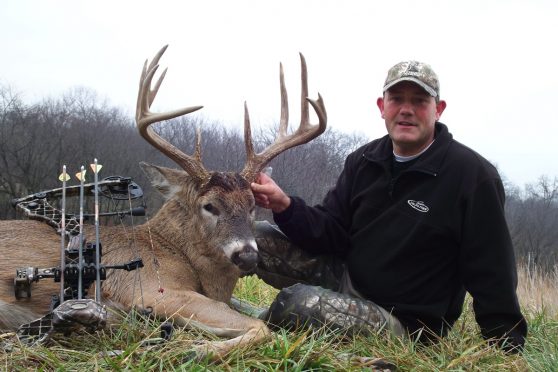
Once you’ve decided which state to hunt in you’ll need to look at your location options. Most hunt on public land, and most whitetail states have plenty of areas including state hunting lands, county areas, Army Corps of Engineers lands or state forests. Many offer a walk-in program of some sort where landowners allow the public to access their land to hunt. These areas are geared toward upland bird hunters, but I’ve found some real gems for deer hunting on these properties in North Dakota and Kansas. Spend some time on the state’s wildlife commission or DNR website to find these areas, as most have maps of the public areas.
Analyze these public lands online through Google Earth to determine which ones look like they have good deer habitat. Check for areas that have ideal bedding spots and funnels that could concentrate deer movement patterns. Make sure you try to determine where the food and water is found. Crop fields butting up against a public forested land can offer great possibilities. On public lands you’ll need to get off a road a ways because most people don’t hunt more than one-half mile from their truck or vehicle. Once you get a good understanding of the terrain online and from aerial photos, you can then start to pick out potential treestand sites. Also look for good access points where you can get to and from that treestand with minimal impact on a deer’s keen senses.
Are you enjoying this post?
You can be among the first to get the latest info on where to go, what to use and how to use it!
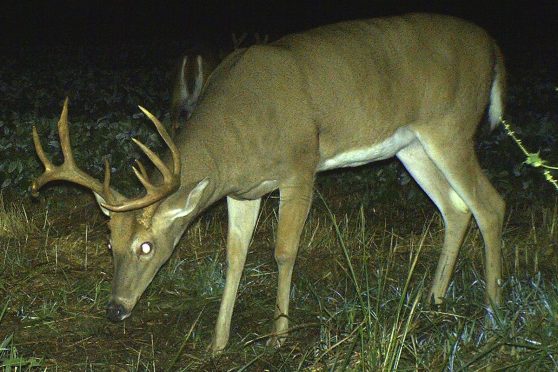
I spend time on hunting forums to search for information on a particular area. Just asking a question on a hunting message board will turn up some great nuggets. In one case, I had a hunter from a state far away offer to drive me around and show me some areas. You can bet I took him up on the offer.
The next thing that needs to be done is to get some firsthand information from wildlife biologists, game wardens and county conservation boards. Ask them about the property and how much hunting pressure it gets and what’s available. Ask if their wildlife food plots have been planted, and if so what is planted in them. Finally ask them about the deer population and if there have been issues such as EHD that could adversely affect them. I will try to call back about a week before I leave and ask them more questions such as if the crops have been harvested or if they’ve seen deer very recently. Also find out if the bucks are chasing the does or just hitting the scrapes. Answering these are part of a public employee’s job, so don’t be shy.
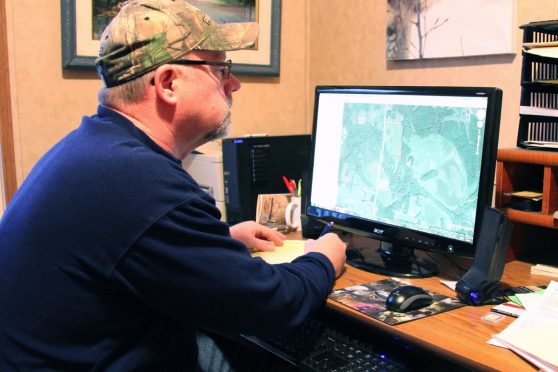
I will also get some trail cameras out to assess the deer population and to check for trophy potential. A scouting trip in spring or now in June will help you learn the area. You can simply leave the trail cameras out for a month or more to gather information. In some states I hunt regularly, I have a buddy or two who will put trail cameras out for me a month or so before I arrive. I mail the cameras to them if they don’t have any, and when I get there I then have a lot of great leads to go on.
My book, The Freelance Bowhunter, is for road-trip hunters and goes into further detail on this subject. Your success for a fall whitetail-hunting trip begins in spring and summer. Start right now, and in the fall you’ll be rewarded for it.
MWO
SHARE THIS POST
Did you enjoy this post?
You can be among the first to get the latest info on where to go, what to use and how to use it!
Bernie Barringer
Bernie Barringer has hunted big game with a bow in more than a dozen states and in multiple Canadian provinces. Passion drives him to learn more and hunt new places, and this column is your ticket to his travels. The author of 13 books and thousands of articles, you can find even more from him at bowhuntingroad.com and BowhuntingRoad on YouTube.
